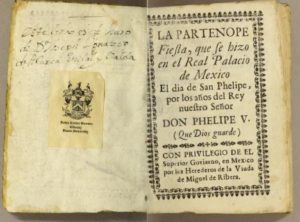
Opera Profile: ‘Partenope,’ Zumaya’s Lost Spanish Opera
By Gillian ReinhardOne of the first composers born in the western hemisphere, Manuel de Zumaya (1678-1744) combined Baroque music with the sounds of colonial Spain. His lost opera, “Partenope,” was the first written in Italian to premiere in the New World.
The work was first shown to audiences in Mexico City at the viceroy palace on May 1, 1711, making it the earliest known complete opera to be created in North America.
The opera was based on a libretto by Italian poet Silvio Stampiglia. Stampiglia’s story was somewhat familiar on the opera scene, as many Baroque composers (including Handel) had created their own interpretations of the story based on Greek mythology.
Stampiglia’s libretto, and Zumaya’s music, offered veiled commentary on the War of the Spanish Succession, a time of political confusion in Europe. Like many of the composer’s works, “Partenope” is now lost.
Short Plot Summary
Partenope (called Parthenope in Greek mythology) is best remembered as one of the sirens who taunted the hero Odysseus in Homer’s “Odyssey.” After being rejected by the hero, she drowns herself in anguish, but washes ashore in Naples and becomes the city’s queen and founder.
In Handel’s opera, also based on Stampiglia’s libretto, two princes hope to marry Queen Partenope of Naples. Another prince, Emilio, is at war with Partenope. Although Partenope would prefer to marry Prince Arsace, he abandoned a woman who has become desperate to win him back.
The woman, Rosmira, disguises herself as a man to challenge her former lover to a duel, but her plot is foiled by Arsace.
Ultimately, Arsace marries Partenope and the opera concludes happily.
Categories
Opera Wiki

